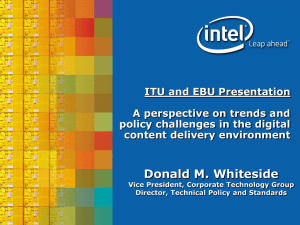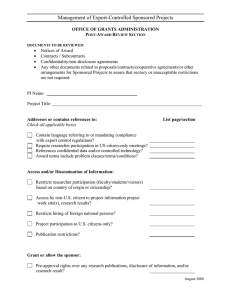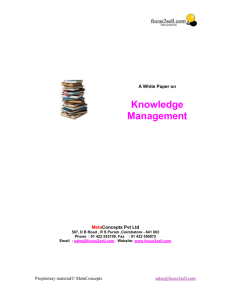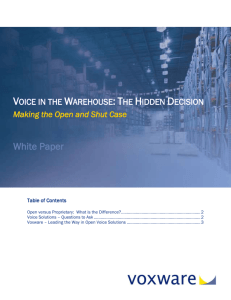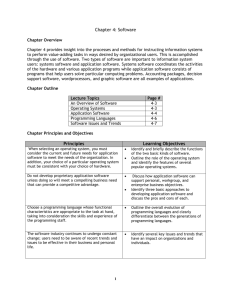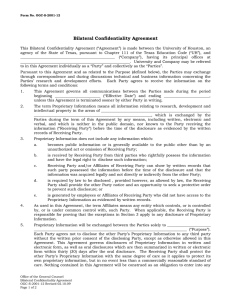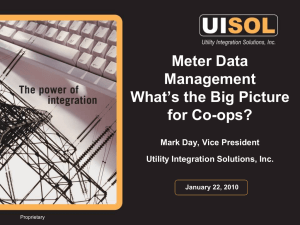Office of Innovation and Industry Engagement Technology Commercialization and Implementation Process
advertisement
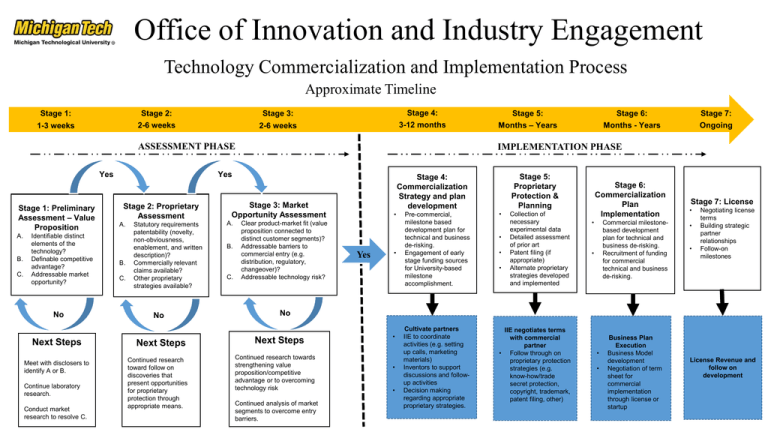
Office of Innovation and Industry Engagement Technology Commercialization and Implementation Process Approximate Timeline Stage 2: Stage 1: 2-6 weeks 1-3 weeks Stage 3: Stage 4: Stage 5: Stage 6: Stage 7: 2-6 weeks 3-12 months Months – Years Months - Years Ongoing ASSESSMENT PHASE Yes Yes Stage 1: Preliminary Assessment – Value Proposition A. B. C. Identifiable distinct elements of the technology? Definable competitive advantage? Addressable market opportunity? No Next Steps Meet with disclosers to identify A or B. Continue laboratory research. Conduct market research to resolve C. IMPLEMENTATION PHASE Stage 2: Proprietary Assessment A. B. C. Statutory requirements patentability (novelty, non-obviousness, enablement, and written description)? Commercially relevant claims available? Other proprietary strategies available? No Next Steps Continued research toward follow on discoveries that present opportunities for proprietary protection through appropriate means. Stage 3: Market Opportunity Assessment A. B. C. Clear product-market fit (value proposition connected to distinct customer segments)? Addressable barriers to commercial entry (e.g. distribution, regulatory, changeover)? Addressable technology risk? Stage 5: Proprietary Protection & Planning Stage 4: Commercialization Strategy and plan development • Yes • Pre-commercial, milestone based development plan for technical and business de-risking. Engagement of early stage funding sources for University-based milestone accomplishment. • Cultivate partners IIE to coordinate activities (e.g. setting up calls, marketing materials) Inventors to support discussions and followup activities Decision making regarding appropriate proprietary strategies. IIE negotiates terms with commercial partner • Follow through on proprietary protection strategies (e.g. know-how/trade secret protection, copyright, trademark, patent filing, other) • • • Collection of necessary experimental data Detailed assessment of prior art Patent filing (if appropriate) Alternate proprietary strategies developed and implemented Stage 6: Commercialization Plan Implementation • Commercial milestonebased development plan for technical and business de-risking. Recruitment of funding for commercial technical and business de-risking. • Stage 7: License • • • Negotiating license terms Building strategic partner relationships Follow-on milestones No Next Steps Continued research towards strengthening value proposition/competitive advantage or to overcoming technology risk Continued analysis of market segments to overcome entry barriers. • • • • • Business Plan Execution Business Model development Negotiation of term sheet for commercial implementation through license or startup License Revenue and follow on development
